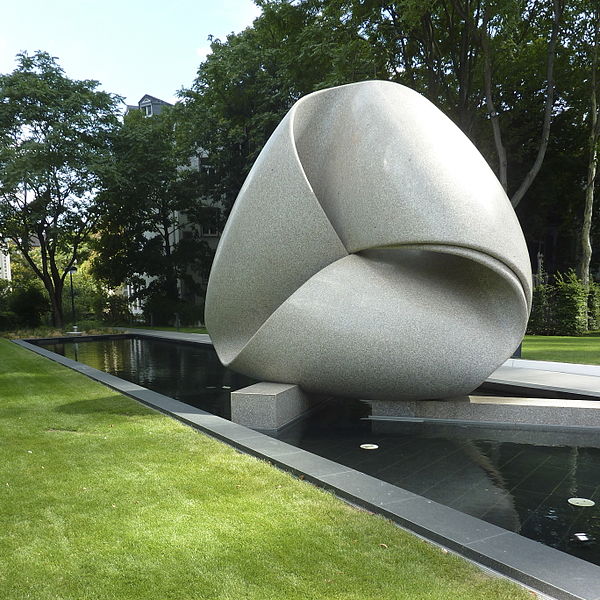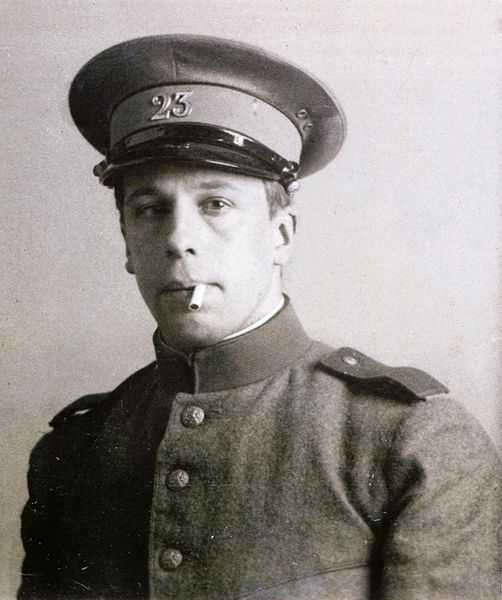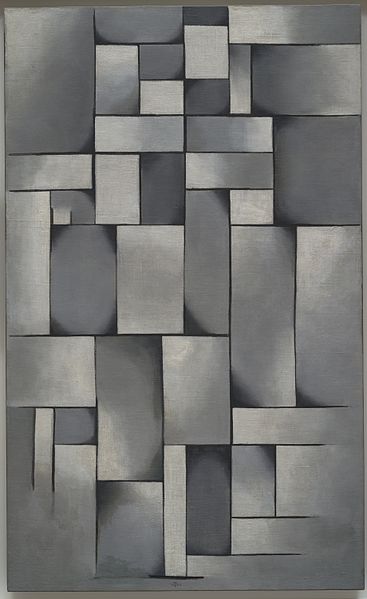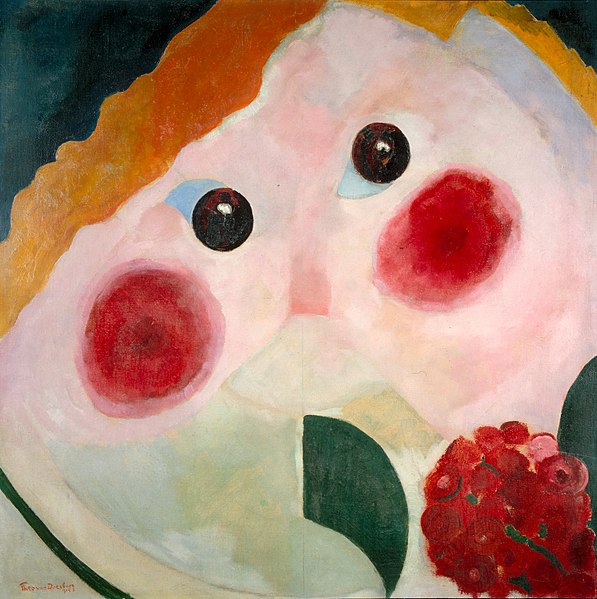Concrete art was an art movement with a strong emphasis on geometrical abstraction. The term was first formulated by Theo van Doesburg and was then used by him in 1930 to define the difference between his vision of art and that of other abstract artists of the time. After his death in 1931, the term was further defined and popularized by Max Bill, who organized the first international exhibition in 1944 and went on to help promote the style in Latin America. The term was taken up widely after World War 2 and promoted through a number of international exhibitions and art movements.
Revue Art Concret, May 1930.
Max Bill, Continuity (Colossus of Frankfurt), 1986, collection: Deutsche Bank, Frankfurt am Main. Max Bill "was keen on creating works based on mathematical and geometric foundations—material manifestations of intellectual processes that resisted symbolism."
Theo van Doesburg was a Dutch artist, who practiced painting, writing, poetry and architecture. He is best known as the founder and leader of De Stijl. He was married to artist, pianist and choreographer Nelly van Doesburg.
Theo van Doesburg as Sergeant Küpper, c. 1915
Theo van Doesburg, Composition in Gray (Rag-time), 1919, Oil on canvas, 196.5 cm × 59.1 cm (77.4 in × 23.3 in), The Solomon R. Guggenheim Foundation Peggy Guggenheim Collection, Venice, 1976
Girl with Ranunculus, Oil on canvas, 1914, Centraal Museum, Utrecht
Principal contributors to De Stijl 1917–1927






